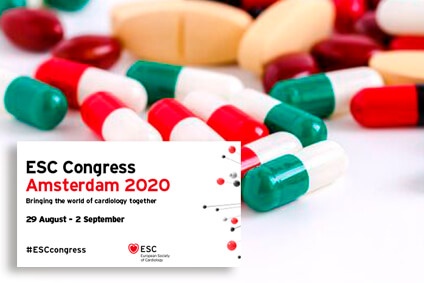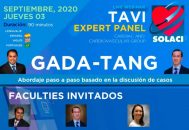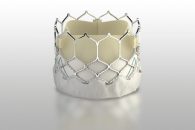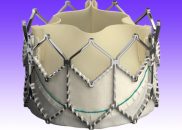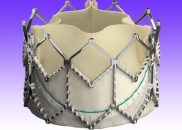After TAVR, patients with no anticoagulation indication are favored by monotherapy with aspirin (ASA) vs. dual antiaggregation therapy (DAPT). This study presented at ESC 2020, simultaneously published in NEJM, seems to go against the latest “fashion” (P2Y12 inhibitor monotherapy) and randomized patients to ASA monotherapy vs. DAPT with clopidogrel for 3 months. Unlike with the…
3rd Generation Valves in Large and X-Large Annuli
In patients with large and extra-large annuli, transcatheter aortic valve replacement (TAVR) is safe and feasible with 3rd generation valves: the 29mm balloon expandable valve Sapien-3, and their competitor, the self-expandable 34mm Evolut R. The largest size of both devices was designed specifically for patients with large or extra-large annuli. However, one of them seems…
Good Evolution of Bicuspid Valves with EVOLUTE or EVOLUTE PRO
Courtesy of Dr. Carlos Fava. TAVR has matured over time and has advanced onto low risk patients, but one of its greatest challenges continues to be bicuspid valve patients. These represent between 1% and 2% of the population and over 20% of young adults requiring surgical valve replacement (SAVR). The study looked at 27,086 patients…
Surgical Valve Replacement Might Soon Be History
Patients with dysfunctional biological prosthetic valves have better outcomes with TAVR vs. surgical reintervention, beyond surgical risk. This study outcomes might even call into question the age cutoff to consider a mechanical vs. a biological prosthesis at first surgery. This analysis recently published in JACC looked at the outcomes of both possible strategies to treat…
SAPIEN 3: Good Outcomes in Bicuspids
Courtesy of Dr. Carlos Fava. Bicuspid aortic valves are found in approximately 2% of patients and represent the most frequent cause of aortic stenosis in young adults requiring valve replacement. Though TAVR has advanced significantly, this entity has not yet been included in the different randomized studies. At present, we have data from different reports,…
Valve-in-Valve: Good Evolution at Long-Term
Courtesy of Dr. Carlos Fava. In the last decades, there has been a marked increase in the use bioprosthetic valves in aortic position given their benefits over mechanical valves. However, long term follow-up has shown structural valve degeneration (SVD). Given the risk of a second surgery after TAVR, valve-in-valve (ViV) has been on the rise,…
Arrhythmias Wrongfully Linked to TAVR?
Continuous electrocardiographic monitoring pre-transcatheter aortic valve replacement (TAVR) detected arrhythmic events in almost half the patients analyzed in this study (which will be published soon in JACC Interventions). A fourth of these patients needed urgent therapeutic actions before the procedure. Previous conduction disorders—particularly, right bundle branch block and chronic renal insufficiency—were linked to a higher…
SOLACI Webinar | Nurses and Technicians | Structural Interventionism
We are interested in your opinion. Please, leave your comments, thoughts, questions, etc., below. They will be most welcome.
2° ProEducar Educational Meeting – Aortic Valve Implantation. Session II
Watch again our “2nd ProEducar Educational Meeting on “Transcatheter Aortic Valve Implantation” on our Youtube account. We are interested in your opinion. Please, leave your comments, thoughts, questions, etc., below. They will be most welcome.
Valve in Valve Presents Better Evolution than re-SARV
Courtesy of Dr. Carlos Fava. Surgical aortic valve replacement with bioprosthesis has proved its benefits, but it fails after 10 to 15 years. Transcatheter aortic valve replacement has been shown valid, especially in high risk patients, but we still have little information and no “head to head” studies to know what is best in this…
